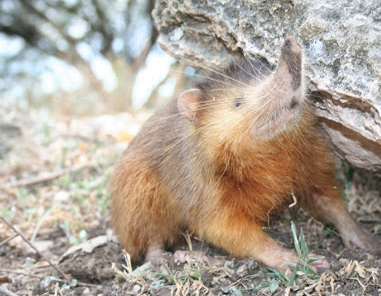Solenodon a venomous species of mammals only one of the family Solenodontidae. They are nocturnal animals that live in burrows and eating insects. And they are mammals who have supposedly primitive character of these species already exist at the end of the dinosaur era.
Solenodon is one of two species of Caribbean soricomorphs family. It remains unclear whether the family Nesophontidae extinct during the Holocene has a close relationship with Solenodon or not.
There are two species of Solenodon still alive today is Cuban Solenodon (Solenodon cubanus), and Haitian Solenodon or Hispaniolan Solenodon (Solenodon paradoxus). Solenodon other two species have gone extinct during the Quarternary.
Solenodon appearance resembles the figure of a very large mouse. Muzzle length is flexible, and the Haitian Solenodon there is a ball-and-socket joint at the bottom of them to improve mobility. This allows them to get narrow crevices where prey they usually hide.
Solenodon body length of about 28 to 32 cm measured from tip of nose to rump. Solenodon weight of about 0.7 to 1 kg. This rare animals fairly easily agitated, so they are prone to bite even with very minimal interference and accidental.
Solenodon has some pretty interesting properties, two of which are nipples on females Solenodon position very close to the buttocks, and Solenodon saliva coming out of two turns poisonous fangs.
Symptoms resulting from exposure to toxins Solenodon among others depresei, labored breathing, convulsions, and paralysis. Even in a test using mice, when exposed to toxins Solenodon in large quantities can result in the rat experienced death.
Solenodon main food is insects, earthworms, and some invertebrate animals. They also feed on dead animals with backbones, and some are preying on vertebrate animals are still alive as small reptiles, and amphibians.
Solenodon have a good sense of smell that is used to locate prey. After finding prey, Solenodon will use both front legs to turn left-right move the prey, then move her head to prey on such prey. Solenodon also have sharp claws that will help in the hunt for prey.
Solenodon birth to her son in the hive. Usually in all their labor will give birth to one or two chicks. Solenodon puppies will be with its mother for approximately 7 months, and usually they will hang on the nipple of the mother long. And when fully grown, Solenodon are solitary animals, they are very rarely communicates with another except for mating.
Both species Solenodon currently in endangered status due to predation by raccoons, especially civet species Herpestes javanicus auropunctatus that in the colonial period were trained to hunt snakes and rodents such as cats and dogs ..
Cuban Solenodon once considered extinct, before in 2003 found the species they are still alive. Hispaniolan Solenodon also had declared extinct because their population is very small, and their behavior is still poorly understood.
Human development in Cuba and Hispanola also aggravate Solenodon population. Their habitat becomes deprived of the impact on narrowing of the spread, and reduced their population. The animals also became one of the very rare animal.












































